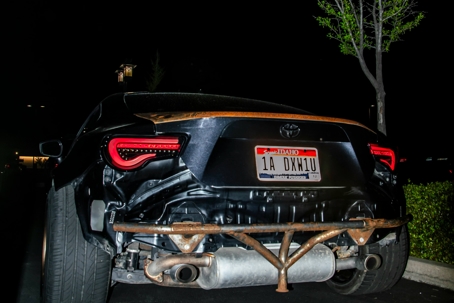Rear-end collisions are among the most frequent types of traffic accidents in Southern California, often seen on the packed highways of Los Angeles, the suburban streets of Glendale, or the scenic coastal roads of Orange County. These accidents happen in a moment—a sudden brake, a distracted driver—and the consequences can range from minor fender benders to severe, life-altering injuries. Despite how common they are, rear-end crashes present a variety of legal and insurance complications, particularly when uninsured or underinsured drivers are involved.
Understanding your rights as a victim is vital, especially in California, where the laws around negligence, liability, and compensation are nuanced. In this detailed guide, we’ll explore the legal foundations of rear-end accidents, how fault is determined, what to do if the other driver is uninsured or underinsured, and why having a seasoned attorney from Arshakyan Law Firm on your side can make all the difference.
What is a Rear-End Collision?
A rear-end accident happens when one vehicle crashes into the rear of another. While this might seem simple, each collision has unique circumstances that can affect liability and compensation. For example, was the lead vehicle braking erratically? Was the driver behind distracted or speeding? These questions are critical when determining fault and damages.
Most people associate rear-end crashes with traffic signals or sudden stops on congested highways. However, they can also occur in parking lots, residential areas, or during lane merges. The types of vehicles involved—whether it’s a compact car, a motorcycle, or a commercial truck—can also influence injury severity and case value.
Common Causes of Rear-End Collisions
Let’s break down the most common causes of rear-end collisions in Southern California:
- Distracted Driving: This includes texting, using a phone, eating, or adjusting the radio. Distracted drivers often react too slowly or not at all to changes in traffic, making them a significant hazard.
- Tailgating: This dangerous habit leaves little room for error. If the car ahead slows or stops, there’s often no time or space to react safely.
- Speeding: Speeding increases both the chance of a collision and the severity of the damage and injuries sustained. At high speeds, the stopping distance increases dramatically.
- Sudden Braking: Sometimes, a lead driver may slam on the brakes unnecessarily or without signaling, catching the rear driver off guard. This complicates the assignment of fault.
- Weather Conditions: Rain, fog, and even bright sun glare can contribute to visibility or traction problems, increasing the likelihood of a crash.
- Driving Under the Influence: DUI remains a leading cause of traffic accidents. Impaired judgment and delayed reaction times are common among intoxicated drivers.
Common Injuries After Rear-End Crashes
When a rear-end collision occurs, injuries are not always immediately apparent. The body’s adrenaline response can mask pain for hours or even days. Common injuries include:
- Whiplash: A soft tissue neck injury caused by the forceful movement of the head and neck.
- Spinal Injuries: Damage to the spinal discs or vertebrae can result in chronic back pain or even permanent disability.
- Concussions: Even a low-speed impact can cause the brain to strike the inside of the skull.
- Facial Injuries: These can occur when airbags deploy or if the face strikes the steering wheel, dashboard, or window.
- Psychological Trauma: Anxiety, depression, and PTSD are common after traumatic accidents and deserve recognition in your claim.
Who’s at Fault in a Rear-End Accident?
California typically holds the rear driver responsible in a rear-end accident. The logic is that all drivers should maintain a safe following distance. However, this presumption isn’t absolute. Some examples where the front driver may be partially or fully at fault include:
- Brake-checking: Intentionally slamming on the brakes to intimidate or provoke the rear driver.
- Faulty Brake Lights: If the lead driver’s brake lights were not working, the driver behind may not have had enough warning.
- Illegal Maneuvers: Making a sudden illegal U-turn or stopping unexpectedly without reason can shift liability.
Understanding Comparative Negligence in California
California follows the doctrine of pure comparative negligence. This means that even if you are partially at fault, you can still recover damages—your award will simply be reduced by your percentage of fault. For example, if you’re 20% responsible, you can still receive 80% of the awarded damages.
This approach ensures fairness but also requires strong legal advocacy to prove your minimal fault and maximize your recovery.
What If the Other Driver Is Uninsured or Underinsured?
Uninsured drivers remain a big problem in California. Even though the law requires liability insurance, many drivers take the risk of going without it. If you’re hit by an uninsured driver, your options include:
- Uninsured Motorist Coverage (UMC): If you’ve opted for this in your policy, it can cover medical expenses, lost wages, and other costs when the other driver has no insurance.
- Underinsured Motorist Coverage (UIM): When the at-fault driver’s policy doesn’t cover all your losses, your UIM can make up the difference.
- Medi-Cal or Private Health Insurance: These can help cover immediate medical expenses, but may later require reimbursement if you receive a settlement.
- Filing a Lawsuit: If insurance is not an option, you may sue the driver directly. However, collecting damages can be difficult if the driver has no significant assets.
Steps to Take After a Rear-End Collision
What you do after an accident matters—a lot. Here are the steps to follow after a rear-end collision to protect your case:
- Ensure safety and check for injuries. Move to a safe area if possible and call 911 if anyone is hurt.
- Document everything. Take photos of the damage, injuries, location, skid marks, and traffic signs.
- Exchange information. Get the other driver’s name, license number, insurance, and contact info.
- Collect witness statements. If someone saw the accident, their testimony could support your claim.
- Seek medical attention. Even if you feel fine, some injuries take time to surface.
- Contact a personal injury lawyer. Legal guidance is critical before speaking with insurance companies.
Dealing With Insurance Adjusters
Insurance companies are not on your side—even your own provider. Adjusters are trained to limit payouts and protect their employer’s bottom line. Common tactics include:
- Offering a quick, lowball settlement
- Asking leading or manipulative questions
- Requesting your full medical history to search for pre-existing conditions
- Delaying or denying legitimate claims
Let your attorney handle all communication with insurers. Once you have legal representation, adjusters are legally required to deal directly with your lawyer.
Damages You May Be Entitled To
Damages are categorized into economic and non-economic:
- Economic Damages: Medical bills, lost income, rehab costs, medication, transportation, and repairs.
- Non-Economic Damages: Pain and suffering, mental anguish, loss of enjoyment of life, and emotional distress.
An experienced attorney can help quantify these losses and ensure your claim reflects both immediate and long-term damages.
Case Examples From Arshakyan Law Firm
One of our clients was rear-ended on the 405 freeway. Initially offered $5,000 by insurance, we negotiated a final settlement of $68,000 after proving the long-term impact of her injuries.
Another client, a rideshare driver hit by an uninsured motorist, lost six weeks of income. With our help, he secured the full uninsured motorist policy limit, plus additional compensation for pain and suffering.
These are just two of the many individuals we’ve helped regain control of their lives after a devastating crash.
Why Choose Arshakyan Law Firm
At Arshakyan Law Firm, we:
- Offer free consultations and honest case evaluations
- Provide access to top medical care, even without insurance
- Handle all paperwork, calls, and negotiations
- Operate on contingency: no fees unless we win your case
- Take pride in fighting for justice and maximum compensation
We’ve helped recover millions of dollars for victims across Los Angeles, Glendale, Burbank, Van Nuys, Orange County, San Bernardino, Lancaster, Ontario, Oxnard, Beach cities, and surrounding areas in Southern California. Whether your case involves whiplash, surgery, or long-term disability, we’re prepared to stand by your side.
Don’t Wait—Time Limits Apply
California has a two-year statute of limitations for personal injury claims. Waiting too long can result in losing your right to compensation. If you’ve been in a rear-end accident, the sooner you contact us, the better we can preserve evidence and build your case.
Call Us Today for a Free Consultation
If you or a loved one has been injured in a rear-end accident, don’t wait. Contact Arshakyan Law Firm today at (818) 650-9985 for your free consultation. We are in your corner!

